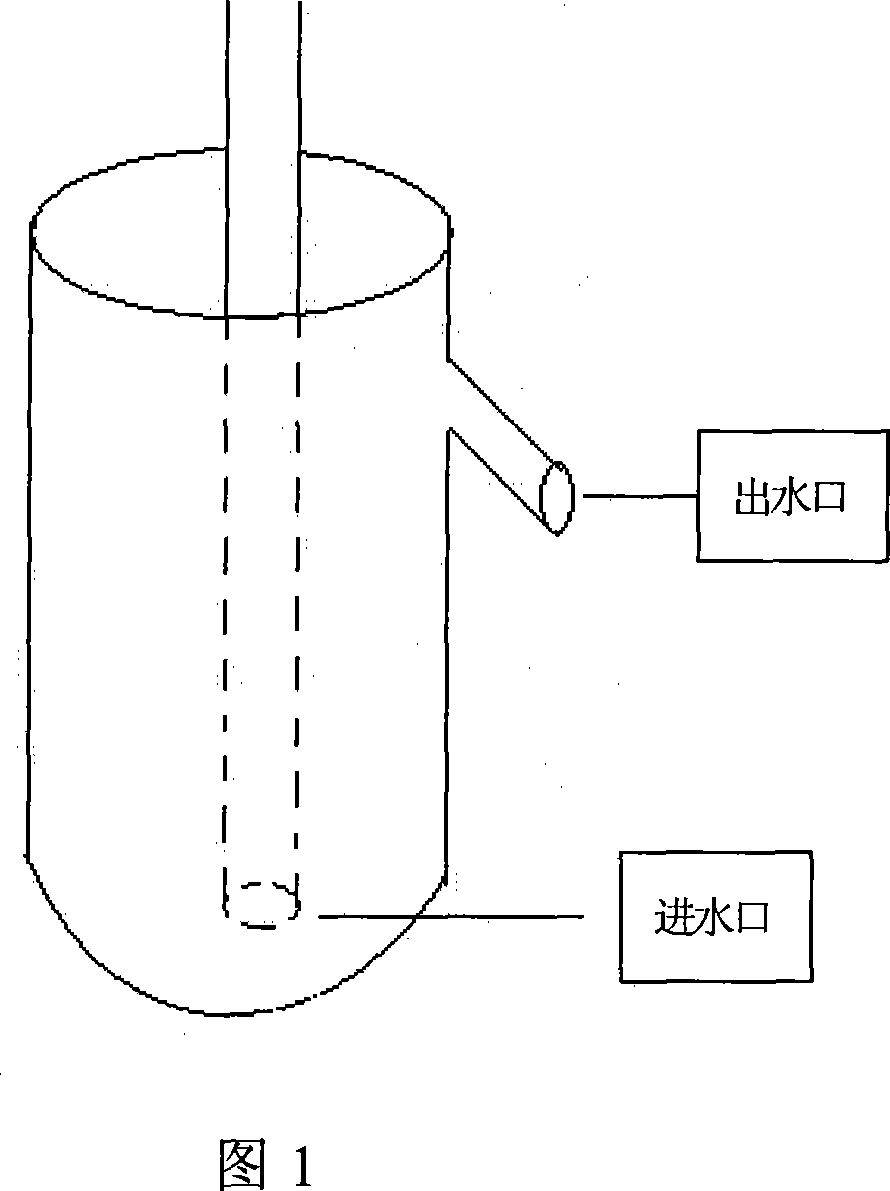Tilapia oosperm artificial incubation method
A technology for artificial incubation and fertilization of eggs, applied in fish farming, climate change adaptation, application, etc., can solve the problems of inability to carry out family breeding, unclear genetic background, and inability to clearly know the parents, so as to avoid offspring germplasm. Degradation, impact reduction effect
- Summary
- Abstract
- Description
- Claims
- Application Information
AI Technical Summary
Problems solved by technology
Method used
Image
Examples
Embodiment 1
[0017] The artificial incubation method of tilapia zygote of the present invention adopts following processing steps:
[0018] The present invention mainly adopts the mode of one male and one female to carry out mating breeding of tilapia in a net cage, and the temperature of the mating breeding water is 25°C. After 7 days, check the mouth of the female fish. If there are fertilized eggs in the mouth of the female fish, hold the small copy net in one hand, hold the female fish in the other hand, open the lower jaw of the female fish with the index finger, and remove the fertilized eggs (about 800 grains) in the mouth of the female fish. Pour it into the cheat sheet, rinse with salt water concentration: 0.5%, and transfer it to the incubator. There is a plastic water pipe in the incubator leading to the near bottom of the incubator to adjust the water flow so that the fertilized eggs float in the water for running water incubation. After 5 days, the fertilized eggs can hatch i...
Embodiment 2
[0020] The full artificial hatching of tilapia fertilized eggs of the present invention adopts the following process steps:
[0021] One male and one female tilapia were placed in an indoor cage for pair breeding, and the temperature of the pair breeding water was 30°C. After 8 days, the oral cavity of the female fish was checked and fertilized eggs were found. Hold the small copy net in one hand, hold the female fish with the other hand, open the lower jaw of the female fish with the index finger, pour the fertilized eggs (about 2000 eggs) in the mouth of the female fish into the small copy net, rinse with 0.6% salt water, and transfer them to the incubator. Adjust the water flow to make the fertilized eggs float in the water and hatch in running water. After 5 days, about 2000 fry were hatched from the fertilized eggs. The hatching water temperature range is 30°C. The structure of incubator is similar to embodiment one.
Embodiment 3
[0023] The full artificial hatching of tilapia fertilized eggs of the present invention adopts the following process steps:
[0024] One male and one female tilapia were placed in an indoor cage for pair breeding, and the temperature of the pair breeding water was 28°C. After 7 days, the oral cavity of the female fish was checked and fertilized eggs were found. Hold the small copy net in one hand, hold the female fish with the other hand, open the lower jaw of the female fish with the index finger, pour the fertilized eggs (about 1000 eggs) in the mouth of the female fish into the small copy net, rinse with 0.7% salt water, and transfer them to the incubator. Adjust the water flow to make the fertilized eggs float in the water and hatch in running water. After 7 days, about 800 fry were hatched from the fertilized eggs. The hatching water temperature range is 32°C. The structure of incubator is similar to embodiment one.
[0025] From the first fully artificial hatching on...
PUM
 Login to View More
Login to View More Abstract
Description
Claims
Application Information
 Login to View More
Login to View More - R&D
- Intellectual Property
- Life Sciences
- Materials
- Tech Scout
- Unparalleled Data Quality
- Higher Quality Content
- 60% Fewer Hallucinations
Browse by: Latest US Patents, China's latest patents, Technical Efficacy Thesaurus, Application Domain, Technology Topic, Popular Technical Reports.
© 2025 PatSnap. All rights reserved.Legal|Privacy policy|Modern Slavery Act Transparency Statement|Sitemap|About US| Contact US: help@patsnap.com

